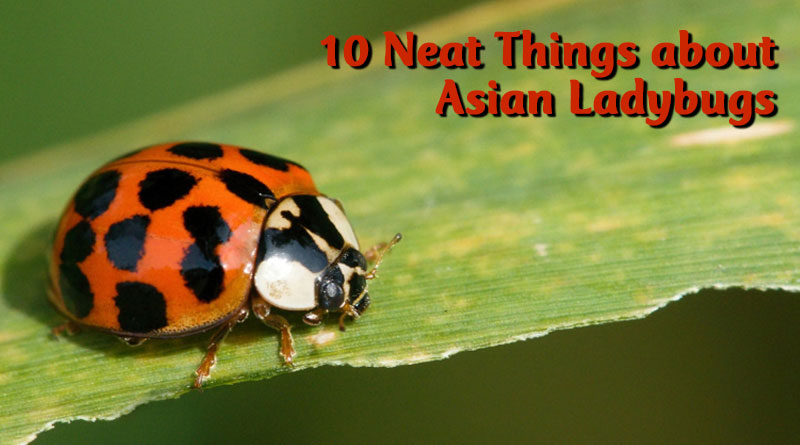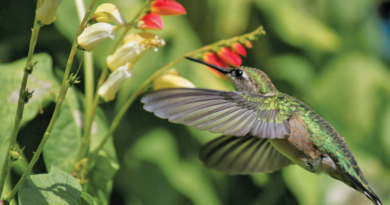About Asian Ladybugs
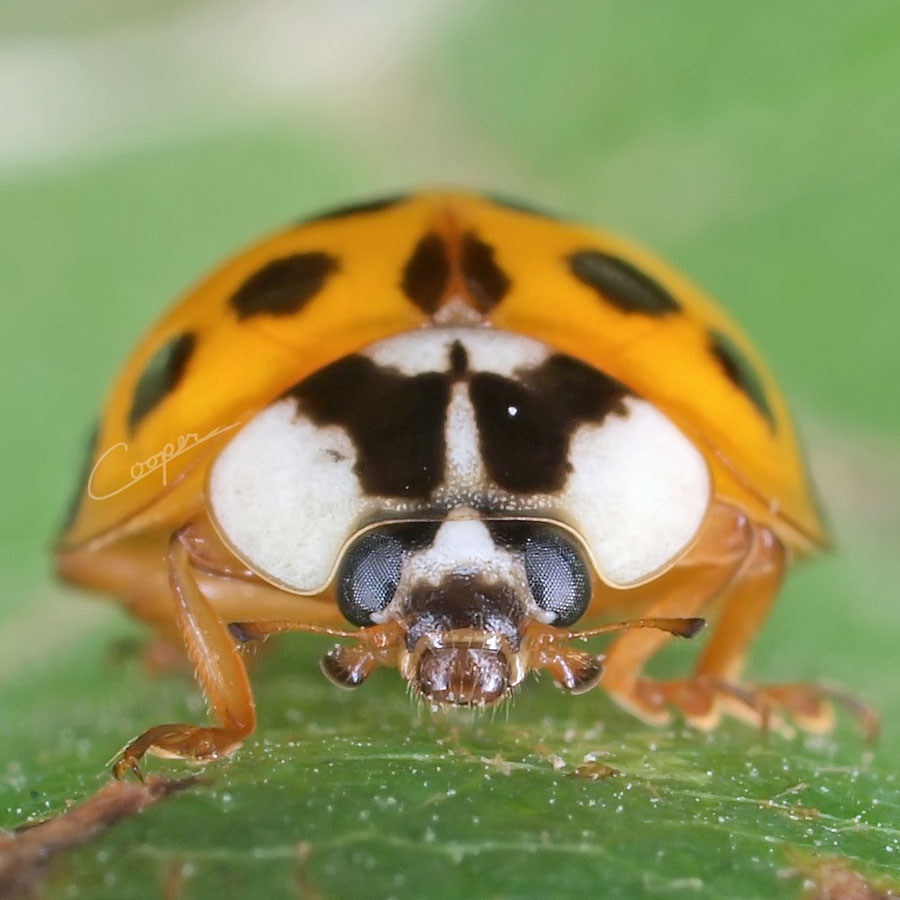
1. The bird that bites.
Harmonia axridis, better known as the Asian ladybug or ladybird, has a number of anti-human habits and one of these is the ability to “bite”. Actually, it’s more of a pinch, but it can leave a small red spot behind that may itch or become more irritating if you are sensitive or allergic. Some say the bugs are looking for salt or moisture on your skin. Regardless, they will fly at you, hitting your face, head or exposed skin.

2. Friend or foe?
We were taught as children to admire the pretty ladybird and save it from danger so it could “fly away home” because, “your house is on fire and your children are alone”. Today, we are apt to ask where it came from first. Never mind counting or even looking for spots (some males have very faded splotches) – there are many possibilities. Nor is colour an indicator – they can range from red to orange. To tell if the bug is native or Asian, look for a white pronotum (the space behind the head) with black M- or W-shaped markings to identify the Asian beetle. Native ladybugs live outside, overwintering under leaves and debris like good bug citizens. Chances are that if it found its way inside, it’s an Asian.
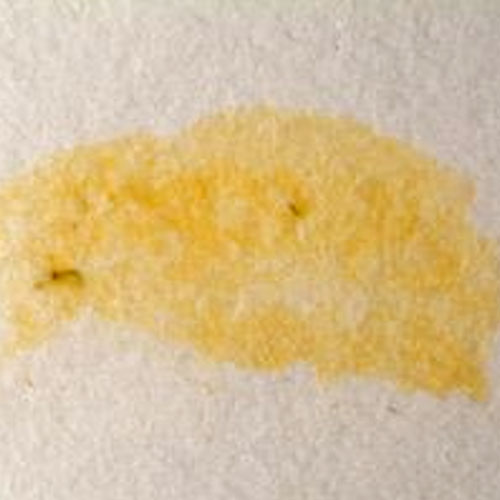
3. Out damn’d spot!
Lady Macbeth could have been talking about ladybugs, which have the people-putting-off habit of releasing a yellow fluid, called reflex bleeding, from the joints in their legs when attacked. This fluid contains long chain hydrocarbons called isopryl methyoxy pyrazines, to which humans are especially sensitive. One drop in an Olympic-sized swimming pool can be detected by us. It smells and tastes like dead leaves or rancid peanut butter. Many people are allergic to these hydrocarbons.
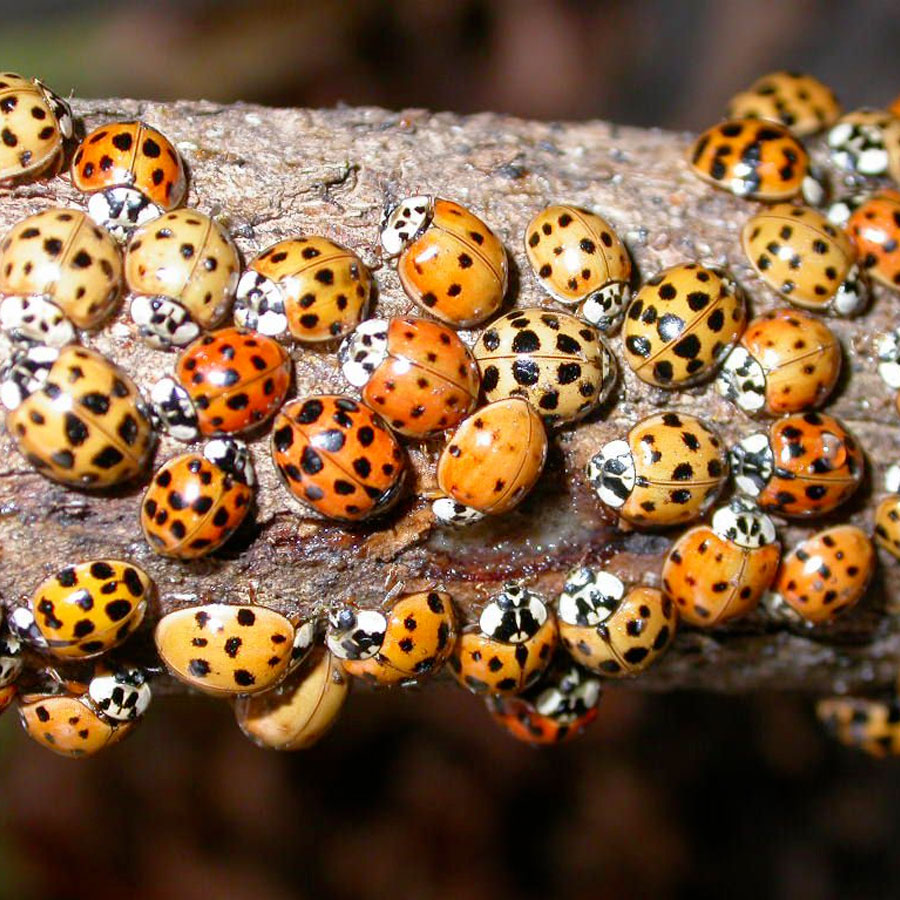
4. Stinking wine!
In 2001, Ontario winemakers dumped one million litres of wine fouled by Asian ladybugs. Thanks to the low tolerance of humans for the slightest concentration of methoxpyrazines (one part per trillion), an infestation of Asian ladybugs made the wine unpalatable.
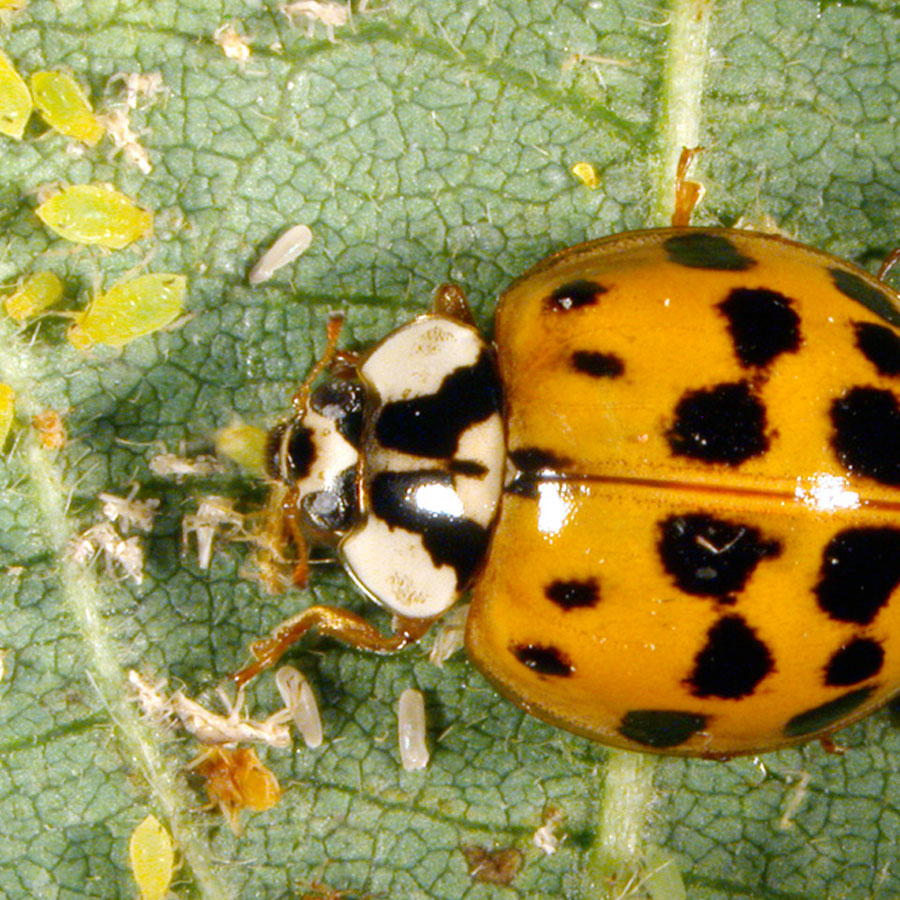
5. Aphid eater?
Yes, Asian ladybugs eat aphids and they have a perfect crop in the yellowish-green Asian aphids introduced to North America around 2000. These aphids feed on soybean crops (originated from Asia) and overwinter in another introduced plant, sea buckthorn, which also originated in Asia. They also eat other soft-bodied insects (see the photo of three Asian ladybugs attacking a slug) such as thrips, and scale insects. Less well known is that Asian ladybugs will also feed on nectar, pollen and some fruits, including grapes and apples that have become overripe or damaged by other insects. By the way, if you are hoping that the ladybugs will out-compete aphids, forget it. Aphids have endless adaptation resources.
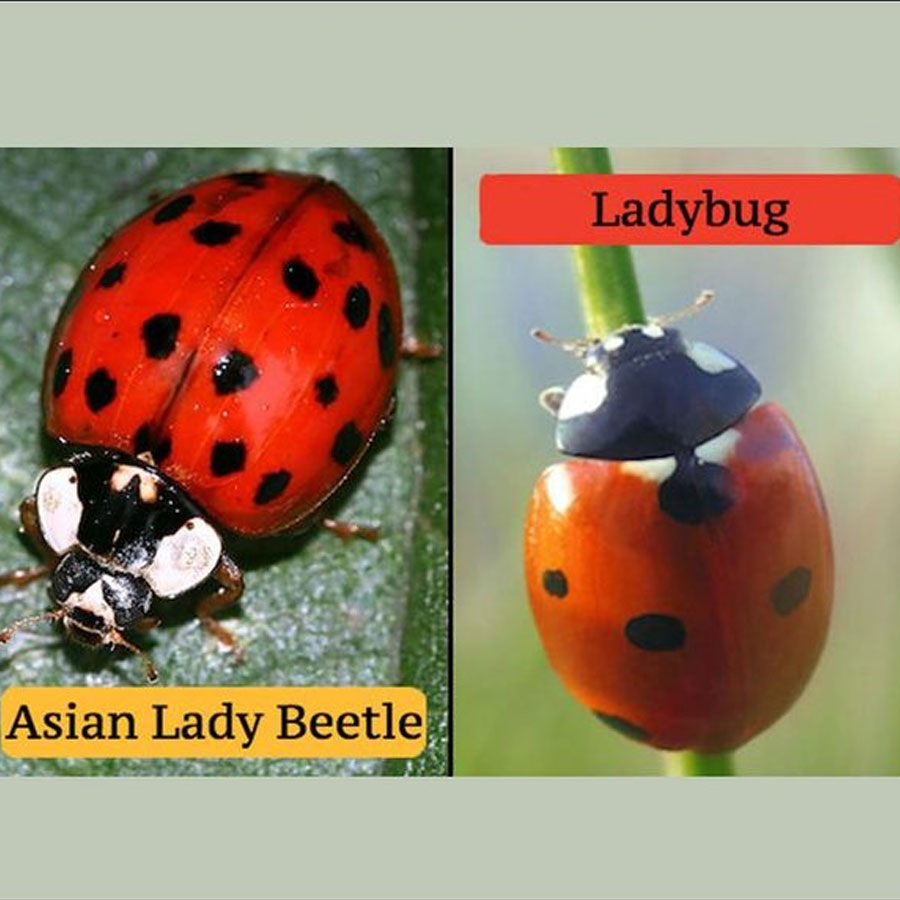
6. How did they get here?
In spite of an attempt by guilty parties to deny that Asian ladybugs are an introduced species to North America, the fact is that they were introduced not just once but repeatedly. It started as early as 1916, where they were introduced in California to combat pecan aphids. Other introductions occurred in the 1960s in a number of southern states, and again from 1978 to 1982 in the same regions. These introductions were compounded by accidental imports by Asian-originated freighters.
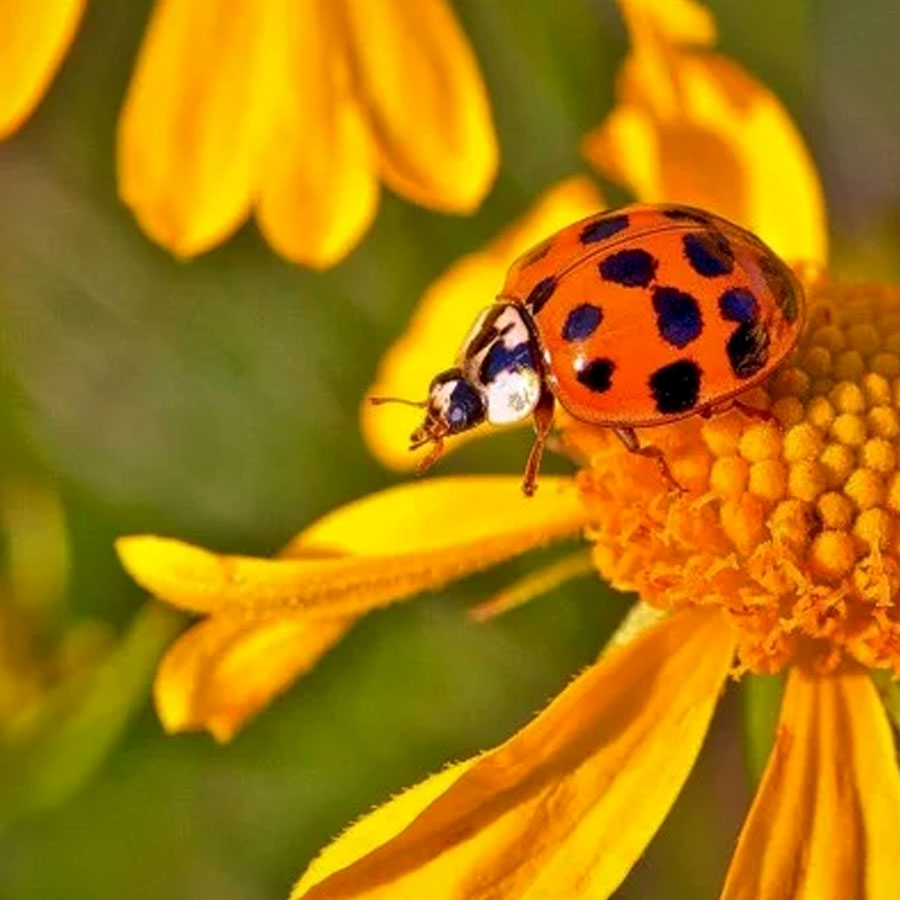
7. Long live ladybird!
Most insects have very ethereal lives that last a few hours, days, weeks or perhaps even months. The ladybeetle lives up to three years!
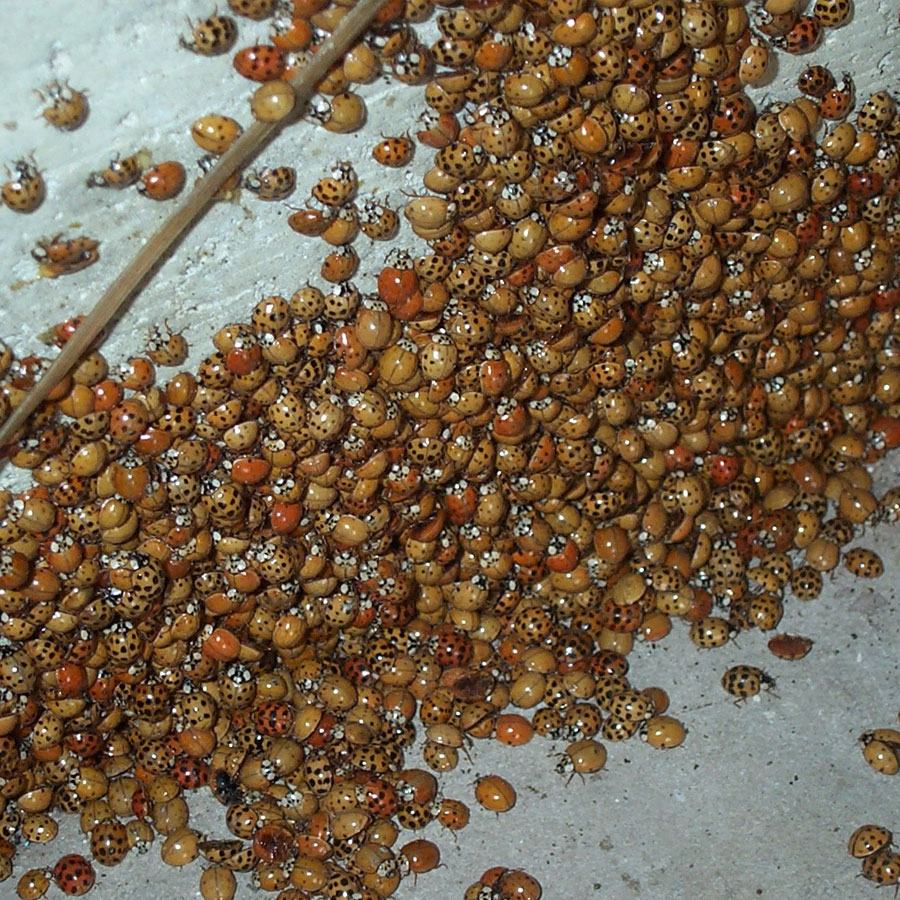
8. Pleasing an Asian ladybug.
In fall, Asian ladybugs look for a warm place to overwinter, hence the invasion of your home, which they will find particularly pleasing if it is light coloured with dark coloured trim on shutters, etc. They are attracted to illuminated surfaces. The side of your house that faces south or southwest is most likely to be the focus of attention so if you are plugging holes or cracks to keep them out, concentrate here. A few are not a big problem, but if you live close to a canola field, you may find thousands ready to greet you come warm fall day.
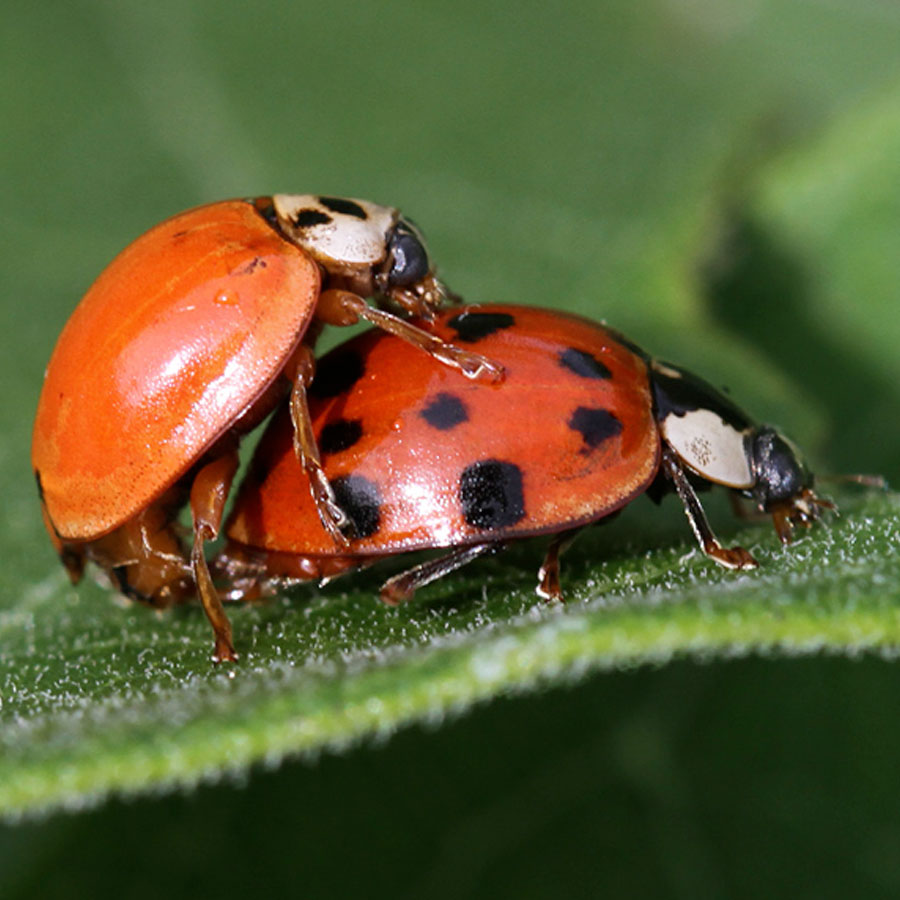
9. How to discourage Asian ladybugs.
Try painting your house a dark, light absorbent colour without contrasting light coloured features. Spread cloves, camphor, menthol, garlic or mineral oil, and keep applying them over and over and over… Really, there is no long-term effective control. You can spend a lot of money on pest control services to spray your house with poison, but you are better off just sealing up all the places they may be able to enter. Helps to keep out mice, too.
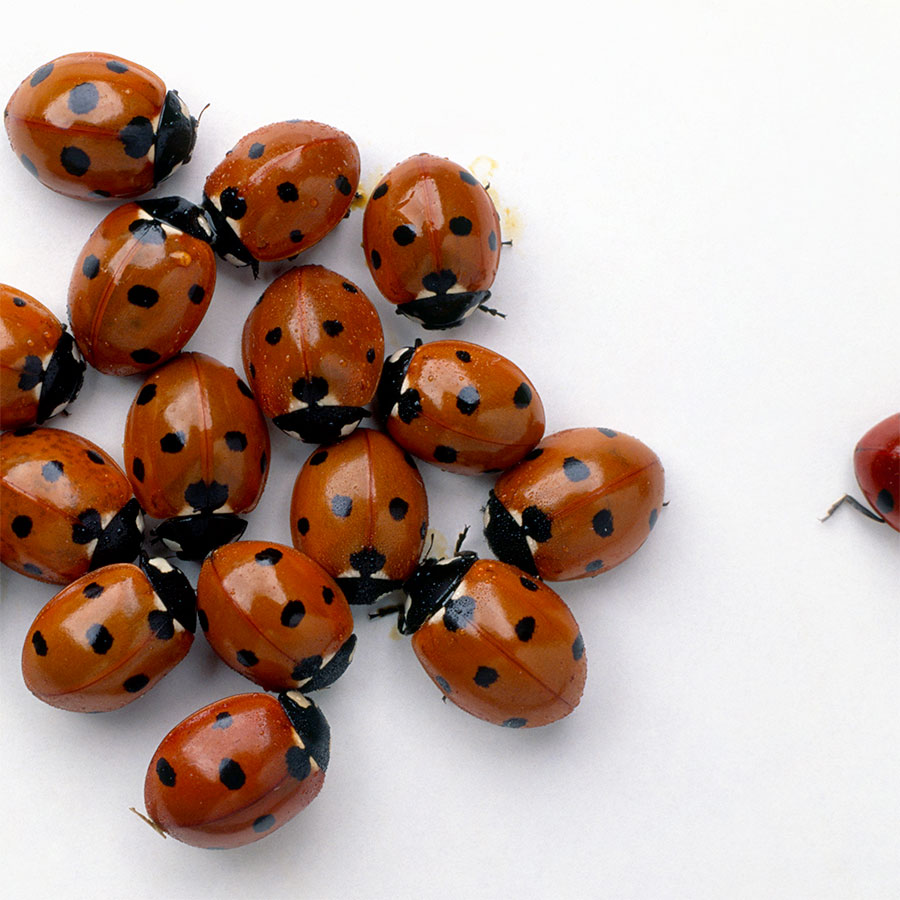
10. Boomerang bug.
Once they find a comfy home, Asian ladybugs will return whether it’s to your attic or just to the warm screen you removed them from. They do this by emitting some of those evil methoxpyrazines, which are long lasting hydrocarbons, and through further emissions of pheromones. Translate: If you had them once, you will get them again – unless you do something to discourage them.



